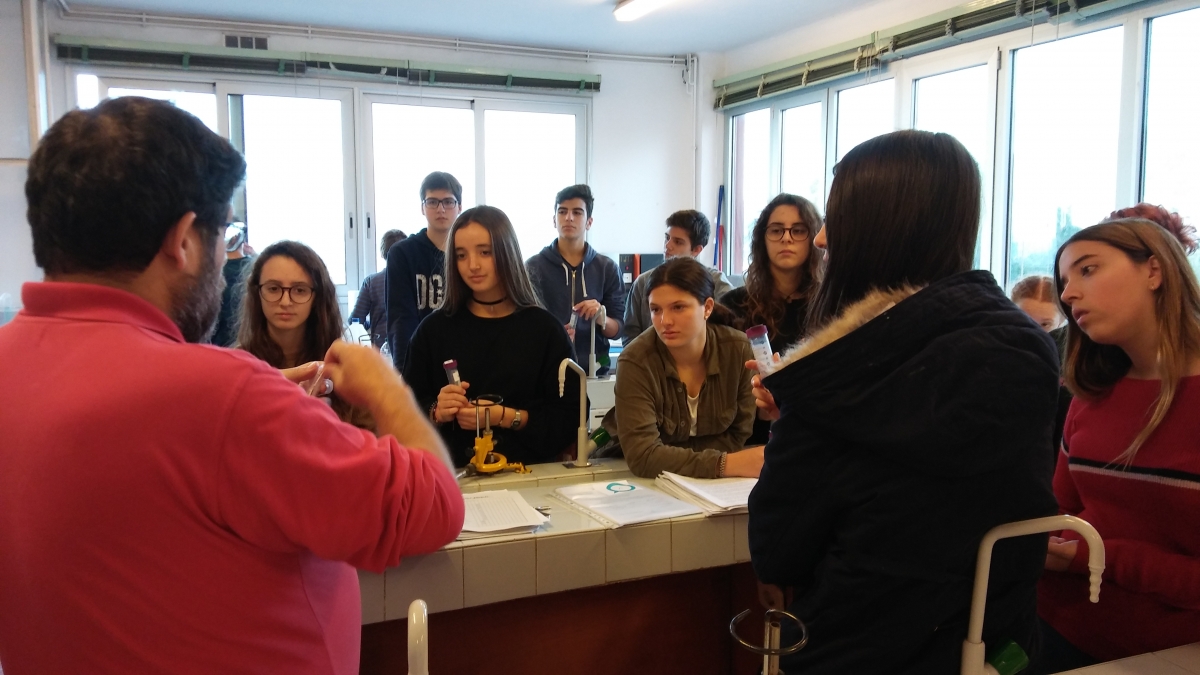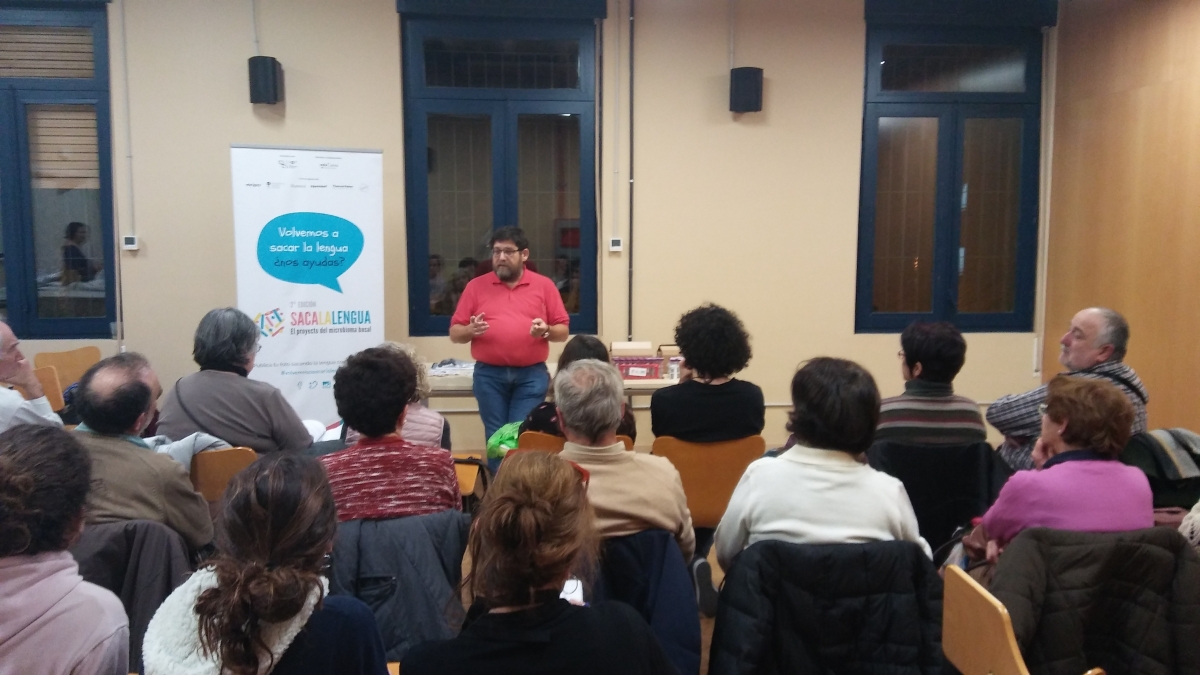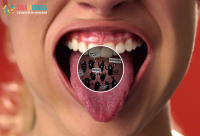 NEWS
NEWS
Sticking the tongue out, again, for science
PRESS RELEASE
After the success of its first edition, the “la Caixa” Bank Foundation and the Centre for Genomic Regulation expand its second edition with a tour around Spain and opening the study to other population groups.
Once again, citizens stick out their tongues for science: the second edition of the “Saca La Lengua” project for the study of the oral microbiome, is underway.
- The second edition of the “Saca La Lengua” (Stick Out Your Tongue) project is expanding its horizons at every level: new population groups, more scientific challenges to resolve, higher dissemination and greater involvement of society.
- The project starts from the map of Spanish young people’s oral microbiome, developed from the first running, and now aims to find the main differences of this map with that of other age groups or patients of certain conditions such as celiac disease, cystic fibrosis or Down syndrome.
- Some 7,000 kilometers, 2,000 saliva and lifestyle samples, plus nearly 50 informative presentations all around Spanish territory. Plans are for “Saca La Lengua” to reach over 5,000 citizens.
The project “Saca La Lengua” (Stick Out Your Tongue) begins its second edition this week in Barcelona. The Centre for Genomic Regulation (CRG) and “La Caixa” Bank Foundation continue to promote this citizen science project meant to discover the variety of micro-organisms that live in our mouths, specifically bacteria, and determine whether given varieties are related with any environmental and/or lifestyle trait.
“Conducting citizen science projects in the molecular biology and genomics field is not easy at all, and after the success of the first running, we had no doubts about doing it again.” says Luis Serrano, Director of the Centre for Genomic Regulation. “In this new edition, even more people will be participating in the project, with new population groups include in the sample-taking, presentations and discussion panels to promote opportunities for dialog between scientists and citizens, something that is truly necessary and that helps contribute to responsible research and innovation,” states the Director.
The project is based on the map of Spanish youth’s oral microbiome that resulted from the first running of “Saca La Lengua”. “Now that we have managed to draw up a standard oral microbiome of adolescents in Spain, and we have found variations related with dietary habits or lifestyle, we must make the most of this knowledge to respond to new questions, such as identifying differences between healthy youth and other population groups,” says Toni Gabaldón, ICREA research professor at the CRG and scientific director of “Saca La Lengua”.
“The prior edition of ‘Saca La Lengua’ became an innovative, unique tool for the teaching community. Now, the project is not limited to schools. Society is fully involved, and participating in all stages of the project. In short, the project is inspiring a paradigm shift in society, stimulating new forms of thinking and acting, something we share and promote from different areas of “la Caixa” Foundation,” states Jordi Portabella, Director of the Research Area at “la Caixa” Bank Foundation.
 The results attained in the first running of the project make up a large-scale description of the resolution of the oral microbiome in an adolescent population of Spain. One example of the things researchers would like to know is how this microbiome evolves as a person ages. For that reason, in this second running, samples will be taken from the same students (now, two years on), as well as from the adult population. Other scientifically relevant matters in this new running focus on the changes that certain pathologies such as celiac disease, cystic fibrosis, Down syndrome, or anorexia cause in the microbiome and if it is possible to discover to what extent the information on the oral microbiome of these patients could be useful for the diagnosis and possible treatments of the dental conditions of these groups.
The results attained in the first running of the project make up a large-scale description of the resolution of the oral microbiome in an adolescent population of Spain. One example of the things researchers would like to know is how this microbiome evolves as a person ages. For that reason, in this second running, samples will be taken from the same students (now, two years on), as well as from the adult population. Other scientifically relevant matters in this new running focus on the changes that certain pathologies such as celiac disease, cystic fibrosis, Down syndrome, or anorexia cause in the microbiome and if it is possible to discover to what extent the information on the oral microbiome of these patients could be useful for the diagnosis and possible treatments of the dental conditions of these groups.
Science and citizens: a partnership vital to success
Aside from the scientific approach, this project has significant informative and participative components, in which citizens play a key role. Their participation is not limited to collecting samples; they will contribute to the project with their ideas throughout different phases of it.
 First, from the very beginning, individuals have been able to participate in the approach taken by this second running. The CRG research team has proposed the bases of the scientific project, that have later been shared with the entire society for them to give their views through the “participate” section of the project website (www.sacalalengua.org/participa). In this phase, citizens can contribute in the establishment of working hypotheses and set priorities, as well as suggesting new segments of population for sample collection, review the questionnaire items and propose new ones. One example of this dialog is shown in the lifestyle formula to be filled out by all participants. Thanks to the contributions received, ten changes and improvement proposals have already been included.
First, from the very beginning, individuals have been able to participate in the approach taken by this second running. The CRG research team has proposed the bases of the scientific project, that have later been shared with the entire society for them to give their views through the “participate” section of the project website (www.sacalalengua.org/participa). In this phase, citizens can contribute in the establishment of working hypotheses and set priorities, as well as suggesting new segments of population for sample collection, review the questionnaire items and propose new ones. One example of this dialog is shown in the lifestyle formula to be filled out by all participants. Thanks to the contributions received, ten changes and improvement proposals have already been included.
In the second phase of the project, anyone can contribute to the sample collection that will take place all around Spain from January to April 2017, offering samples of their saliva. Additionally, informative presentations will be held in a number of Spanish cities. These sessions will also facilitate exchange between scientists and citizens, strengthening the dialog between the two sides, and contributing to responsible research and innovation.
Last, once the saliva samples have been sequenced, the project plans to repeat the tour of the “Saca La Lengua” van throughout Spain, from January to June, 2018, to encourage citizens to also take part in data analysis. A number of events will be held in which the tools and knowledge will be provided for any person to contribute to data analysis, thereby developing their own conclusions, as occurs in any scientific project.
A logistic challenge consisting of 7,000 kilometers, 2,000 samples and nearly 50 talks
Once again, a scientist from the Centre for Genomic Regulation will visit all of the schools, civic centers and cities involved in the project. A van will be outfitted with the equipment necessary for the initial processing of the samples (a centrifuge, a freezer to conserve them at -20 ºC, etc.). The van will also feature other equipment, such as a miniPCR unit, which will allow citizens to see how samples will be dealt with once they arrive at the CRG laboratory. Furthermore, researchers will advise students, showing them how to handle biologic samples, and will work to ensure that the entire sample collection process is done correctly. The ‘Saca La Lengua’ van will travel more than 7,000 kilometers all over Spain. As they will be visiting over 30 schools and cultural centers throughout the territory, the researcher will offer a number of talks on the human microbiome and its biological repercussion on health in each facility and city visited for the general public as well as for students.
Over these months, the ‘Saca La Lengua’ van will visit Barcelona, the Balearic Islands, the Valencian Community, Múrica, Andalusia, Madrid, Galicia, the Basque Country and Aragon.
The ‘Saca La Lengua’ project is an initiative of the Centre for Genomic Regulation and the ‘la Caixa’ Foundation, which receives support and contributions from the companies Illumina, Eppendorf, miniPCR, and Thermo Fisher Scientific. The scientific and technical services of the CRG that will make possible the development of the project are co-financed by the European Union through the European Regional Development Fund (FEDER).
###
About the Centre for Genomic Regulation
The Centre for Genomic Regulation (CRG) is an international biomedical research institute of excellence, whose mission is to discover and advance knowledge for the benefit of society, public health and economic prosperity. The CRG believes that the medicine of the future depends on the groundbreaking science of today. This requires an interdisciplinary scientific team focused on understanding the complexity of life from the genome to the cell to a whole organism and its interaction with the environment, offering an integrated view of genetic diseases. The combination of the know-how of top-tier scientists from around the world and the availability of state-of-the-art equipment, makes the CRG a unique center with high-level scientific production at the international level, and the best scientific-technical services for research.
One of the key axes of the CRG’s activity is its commitment to the return of knowledge to society. One of its goals is communicate and establish dialog with society, educating the public and responding to its needs. For this reason, it has a program entitled Science and Society, which groups together a number of activities for the dissemination and communication of science, to make the center’s research known, promote scientific callings among youth and strengthen scientific culture among citizens.
eduCaixa, a world of educational activities
eduCaixa is a program aimed at students from 3 to 18 years of age, teachers and parents’ associations. It was born out of the experience and commitment that “la Caixa” has always had with the educational world. The program reaches over 2,000,000 students and teachers of nearly 7,750 schools from all over Spain.
Working under this premise, the project includes educational materials that work as a complement to the tasks conducted in class by teachers and students. In this manner, it complements the formal education of schools with proposals and educational resources on social, cultural, scientific and environmental themes.
For further information, please contact:
Centre for Genomic Regulation (CRG)
Media Relations – Laia Cendrós - Tel. +34 933 160 237
| Attachment | Size |
|---|---|
| 585.81 KB | |
| 106.39 KB | |
| 597.16 KB |

